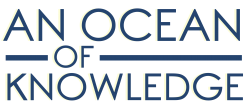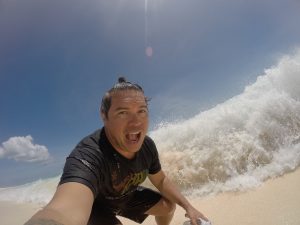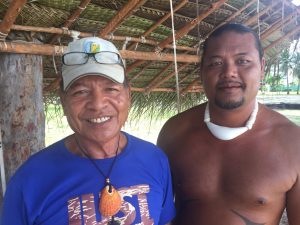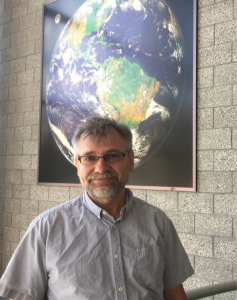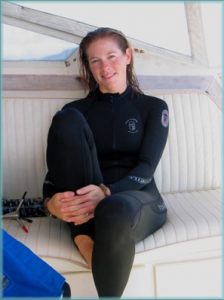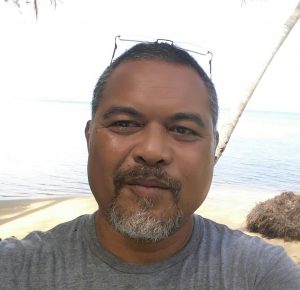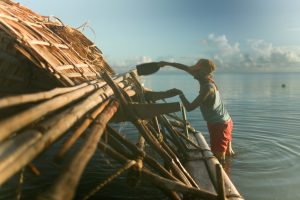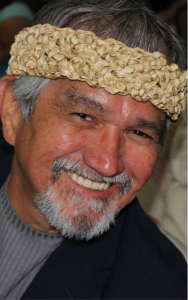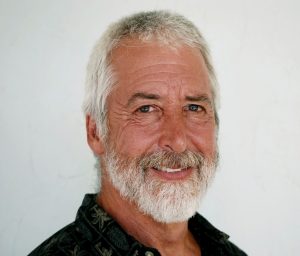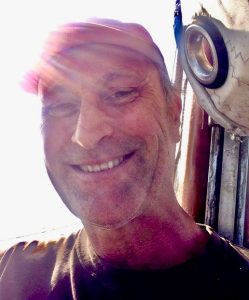Contents [hide]
- 1 .
- 2 Angelo O’Connor Villagomez, The Science of Wayfinding: Can Ancient Knowledge and Values Inform Modern Conservation Decisions?
- 3 Antonio (Tony) Piailug and John Castro,Carolinian and Chamorro Carving and Boat Building Techniques
- 4 Eric Metzgar, Navigation Without Map or Compass in Micronesia: Non-Western Cognitive Skills
- 5 Francois Primeau,Global Warming and Sea Level Rise
- 6 Judy Flores, Finding the Way Home
- 7 Katie Allen, The Importance of Oceanic Subtropical Gyres as Debris Accumulation Zones and How They Effect Ocean Life
- 8 Kristen Davis, A Changing Climate for Coral Reefs
- 9 Larry Raigetal, Looking for Alternate Solution
- 10 MARIANNE “MIMI” GEORGE, LATA’S WAYFINDING SYSTEM AND CLIMATE SCIENCE
- 11 MARIO R. BORJA, Empirical Mathematics in Constructing the Flying Proa
- 12 Moñeka De Oro, The role of women in navigating social change and justice in the Marianas
- 13 PETER J. PEREZ, Beyond Restoration – Building a Future on Ancient Foundations
- 14 Simon Penny, Orthogonal Project
.
Angelo O’Connor Villagomez, The Science of Wayfinding: Can Ancient Knowledge and Values Inform Modern Conservation Decisions?
Traditional wayfinding in the Pacific developed using stars, winds, and waves, but also living biocultural resources to guide voyagers across the sea. This happened during a period when our oceans were full of life and free of pollution. Sadly, modern industrial extraction and pollution threatens the ecosystem under which voyaging developed, therefore if the renaissance of Pacific cultures is to continue, there must be a parallel and equally important renaissance in ocean conservation. This talk explores the shared values and knowledge systems of modern western conservation and ancient Pacific voyaging and begins a discussion on how the new can take lessons from the old.
Angelo O’Connor Villagomez is an officer with the Pew Bertarelli Ocean Legacy Project. He helped secure the designation of the Mariana Trench Marine National Monument by the U.S. government, as well as passage of more than two dozen shark conservation laws in small Pacific and Caribbean island states. Villagomez has more than 10 years of grassroots experience campaigning for ocean protections. He also has worked for the League of Conservation Voters, the Smithsonian Institution, and the Mariana Islands Nature Alliance.
Antonio (Tony) Piailug and John Castro,Carolinian and Chamorro Carving and Boat Building Techniques
Antonio (Tony) Piailug and John Castro are leading the brand new traditional canoe and navigation program for the Department of Community and Cultural Affairs for the government of the Commonwealth of the Northern Mariana Islands (CNMI). As carvers, they will demonstrate the Carolinian and Chamorro carving and boatbuilding techniques Thursday morning from 10am – Noon at the Orthogonal Works site.
Antonio (Tony) Piailug is the son of famed navigator Mau Piailug, a Caroline islander from the island of Satawal. The elder Piailug, who died in 2010, was world renowned for his traditional, non-instrument methods of open ocean voyaging. Antonio Piailug is part of a small group of men who still employ this Carolinian method of seamanship that relies on navigational clues using the sun and stars, winds and clouds, seas and swells, and birds and fish. This skill has been passed from generation to generation in the Carolines.
Commonwealth of the Northern Mariana Islands
John Castro grew up on Saipan but visits Pagan (island) periodically and stays there for several months. He’s part of a transient population that’s gone back and forth since the permanent settlement was destroyed by a volcanic eruption. He loves life on Pagan — fishing and farming, catching lobster and living off the land. Growing up, his grandmother taught him to recognize Chamorro medicinal plants, and how to weave baskets in the traditional way. In the last few years, he’s been learning about traditional Micronesian seafaring, and recently finished a 40-day canoe voyage to Palau. With the rapid modernization of the Mariana Islands, he sees the traditional culture being lost as development increases. With its undeveloped environment, Pagan is a place where Chamorros like him can reconnect with their roots.
“You feel the presence of i animas, our spiritual ancestors,” he says. “You feel it up there.” From:
www.civilbeat.org
How do Pacific Islanders sail over hundreds of miles of open ocean and find landfall on small islands without a chart or magnetic compass? In Micronesia, voyaging trade networks making use of traditional navigation techniques are known to have existed hundreds of years, perhaps thousands, before Magellan discovered Guam in 1521. Now referred to as “wayfinding” by Westerners, Micronesian navigators developed a range of techniques including the use of stars, winds, currents, wave patterns, the flights of birds, and other sea marks. Central to these are the non-Western cognitive skills of etak stellar navigation and dilep wave piloting.
Eric Metzgar is an ethnographic filmmaker and scholar who has been researching and documenting the seafaring traditions of Micronesia for 40 years. His award-winning films, produced by his company Triton Films, include Spirits of the Voyage that records for the first time the sacred Pwo initiation ceremony of Micronesian navigators. He has voyaged thousands of miles with Lamotrek islanders on their hand-hewn canoes, learning the skills of non-instrument navigation. He will soon release A Voyaging Odyssey, a documentary about the 2010 ocean crossings that rediscovered the ancient, traditional routes between the islands of Lamotrek, Guam, Yap and Palau. Dr. Metzgar has an MFA in film production and a PhD in Comparative and International Education, both from UCLA.
Francois Primeau,Global Warming and Sea Level Rise
Green house gas emissions from fossil fuels and land use change are having measurable impacts on the climate of the planet. For the ocean, global warming is leading to global sea level rise because of the thermal expansion of water and because of melting land ice. Warming is also predicted to cause changes in the circulation of the ocean with potentially serious impacts on the biological state of the ocean. In this talk I will review the large-scale impacts of global warming on the ocean and discuss projections for the next few centuries.
Francois Primeau is a Professor of Earth System Science at the University of California, Irvine. He works on estimating the physical and biogeochemical state of the ocean by combining models and data.
Judy Flores, Finding the Way Home
The Festival of Pacific Arts – Guam Festpac 2016 – was a showcase for the Chamorro people to proudly reclaim their identity as Pacific Islanders. Their journey began more than 40 years ago and often involved way-finding through the darkness of modern colonial suppressions and against the tide of indifference which had infiltrated indigenous ways of thinking about themselves. This paper tells the story through interviews with artists and activists of awakenings to the idea that they existed before Spanish colonization; and documents, through case studies and photos, how forgotten histories and practices were revived. Documentary slides accompany the presentation.
Judy Flores has lived and worked in the island of Guam since 1957. She is a professional artist, teacher, folklorist and historian. Her research includes an MA from the University of Guam Micronesian Studies Program and a PhD from the University of East Anglia in Norwich, UK, focusing on issues of art and identity of the Chamorros of the Mariana Islands. As a folklorist for the Guam arts council, she identified traditional arts and artists and documented their journey to reclaim their indigenous history. She is a Research Associate for the RFT – Micronesian Area Research Center at the University of Guam.
Katie Allen, The Importance of Oceanic Subtropical Gyres as Debris Accumulation Zones and How They Effect Ocean Life
Kristen Davis, A Changing Climate for Coral Reefs
Coral reef ecosystems have already experienced massive changes due to direct human influence (fishing and recreation pressure), but more recently indirect human pressure through rising sea surface temperatures is changing the face of reefs world-wide. Rising ocean temperatures are a major threat to coral reefs. When thermally-stressed, corals may expel their symbiotic algae, and the “bßleached” corals may die. I will talk about how we quantify the effect of these extreme temperatures on reefs – where it is successful and where it isn’t in predicting coral bleaching.
Kristen Davis is an Assistant Professor of Civil and Environmental Engineering at the University of California, Irvine. She is interested in understanding how physical processes (winds, waves, tides, currents, etc.) shape the environment in which corals grow.
Larry Raigetal, Looking for Alternate Solution
Our “Faal” our canoe house, our place of passing on our ancestors sacred knowledge. “Reimethau ” people of the ocean is the word we are identified with since time immemorial. Our sacred knowledge of canoe building and navigation system are two among others. While they have gained some international recognitions, equally impartant if not more, is how these knowledge can be preserved for our future generations.
As we face the challenges of today including climate change, we begin to migrate to higher lands in the Yap center. Our centers of learning our “Faal” unfortunately cannot migrate along with us. We must look for alternate solutions. That is our CEO Waa’gey’s approach.
Larry Raigetal is born on the island of Lamotrek in the central Caroline islands. He left his island for the first time in his mid teen years to seek out education in a formal setting. He earned his undergraduate degree from USF, and his graduate from Oxford. After more than 10 years as a diplomat for his country where he represented FSM on many international negotiations, he returned home to pickup where he left of on acquiring traditional knowledge from his grandfather, father anduncles. He is the founder of Waa’gey where for near ten years, he works with his elders to transfer skills to the young people. Through his father and others from the carving school “line of the rats” he earned the title “selap” Master Canoe Carver. Through his grandfather and after making a voyage to Guam for the last FESTPAC, he was initiated in a “Pwo” ceremony as a Master Navigator under the mast of Weriyeng.
MARIANNE “MIMI” GEORGE, LATA’S WAYFINDING SYSTEM AND CLIMATE SCIENCE
Climate researchers use data about the past to understand what is changing now, but data about Oceania is scant. Taumako Islanders are unique among Polynesians in that they still build and navigate voyaging canoes, using only the ancient designs, materials, methods, and tools of their voyaging culture hero Lata. Lata’s wayfinding system correlates and calibrates different types of natural phenomena, and describes patterns of natural phenomena that have been ground-truthed for a millennia. Contemporary Taumakan voyagers observe changes occurring and adjust as needed. For climate science this provides ancient baseline data, and confirms what changes are happening.
Marianne “Mimi” George, Ph.D, a remote-ocean sailor and cultural anthropologist, who supports revival of ancient voyaging practices that enable sustainable and peaceful interactions. George researched spiritual power and female imagery in the ritual cycle of an Austronesian people in New Ireland, Papua New Guinea, the experience of a small, mixed gender, group, in prolonged isolation, wintering-over a sailboat in Antarctic sea-ice to do science, the spiritual connections of sea-hunters and herders across Bering Straits, and the efforts of SE Solomon Islands Polynesian elders and their students to build and navigate using only ancient materials, designs, and methods, and re-establish voyaging networks to share and maintain resources.
MARIO R. BORJA, Empirical Mathematics in Constructing the Flying Proa
Building the Chamorro Flying Proa from a 270 year-old drawing was a formidable challenge indeed. Discovering in the process that mathematics was “built-in” the designs of old made it a pleasure. The length of outrigger booms was a function of the keel. The placement of its outrigger was a simple subtraction and division of lengths. Even the layout of its diagonal trusses holding the outrigger steady found utility in setting the angle of its closest point of sail. From its symmetry and asymmetry, mathematics is alive and functional. This is worth sharing.
Mario R. Borja is the native son of a Chamorro carpenter and a fisherman and comes from a family of canoe builders. At age ten, Mario built his first canoe from corrugated roofing tins. Relying solely on purpose and function Mario carved a small fishing canoe called the galaide, the first Chamorro vessel east of the Marianas. Using the Anson Drawing of 1742, Mario led the construction of a 47-ft Chamorro flying proa in 2010 out of redwood tree using traditional and modern hand held tools. Mario has earned engineering degrees in Aerospace and Astrodynamics.
Moñeka De Oro is a proud daughter of the Marianas and a mother to a rambunctious eight year old boy. Currently she is a history teacher at Southern High School on Guahan. She has a passion for promoting peace, interdependence and sustainability through out the Pacific. Her academic endeavors focus on indigenous epistemologies, cultural preservation and traditional Chamoru healing arts. She is involved in several community organizations through out the Marianas that seek to uplift and unite our peoples.
PETER J. PEREZ, Beyond Restoration – Building a Future on Ancient Foundations
The subjugation of Oceania nations by Western colonial powers has had a profound and negative effect on indigenous cultural practices. In the Mariana Islands, a fundamental strategy in the Spanish program of Chamorro cultural genocide was the repression of traditional maritime practices. The Chamorro’s loss of their sailing canoes had far-reaching and devastating consequences that continue to this day. As we work to restore the maritime traditions in the Marianas we find that we are in reality healing a deep and crippling wound in the Chamorro cultural heart. This presentation looks at traditional canoe culture as a rich and solid foundation for a healthy and thriving indigenous community in a 21st century world.
Peter Perez, along with his wife Emma Perez, have been working for over a decade to bring the practice of indigenous maritime traditions back into daily life in the Mariana Islands. They were instrumental in the planning and funding of the Sakman Project that launched the 47 foot Chamorro-built proa Che’lu in San Diego in 2010. In 2013 they established 500 Sails, an indigenous non-profit based in Saipan. The goal of 500 Sails is to get 500 Chamorro and Carolinian sailing canoes on the water in the Marianas by 2030, matching the number of canoes seen by visitors to the Marianas aboard the San Pedro in 1565. 500 Sails makes canoes accessible and affordable to the average person by providing the materials, training and support to enable individuals to build and sail their own fiberglass canoes based on traditional designs. Neni, 500 Sails’ first canoe was launched in June, 2016. Mr. Perez is also co-founder of PaganWatch and the Alternative Zero Coalition – community activist organizations at the forefront of local opposition to the U.S. Military’s highly destructive live-fire ranges in and around the Mariana Islands.
facebook.com/500SailsDolphinClubSaipan
Simon Penny, Orthogonal Project
